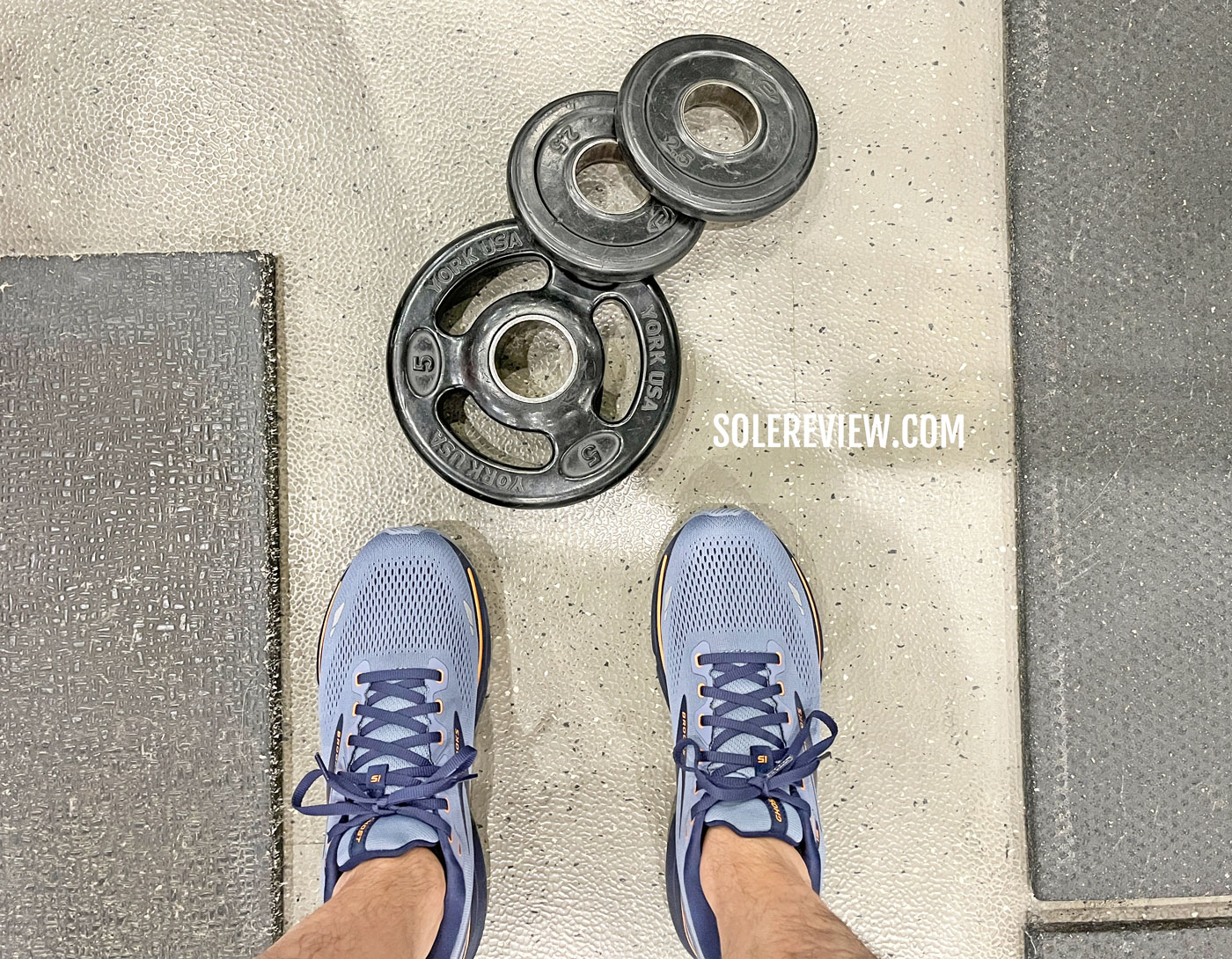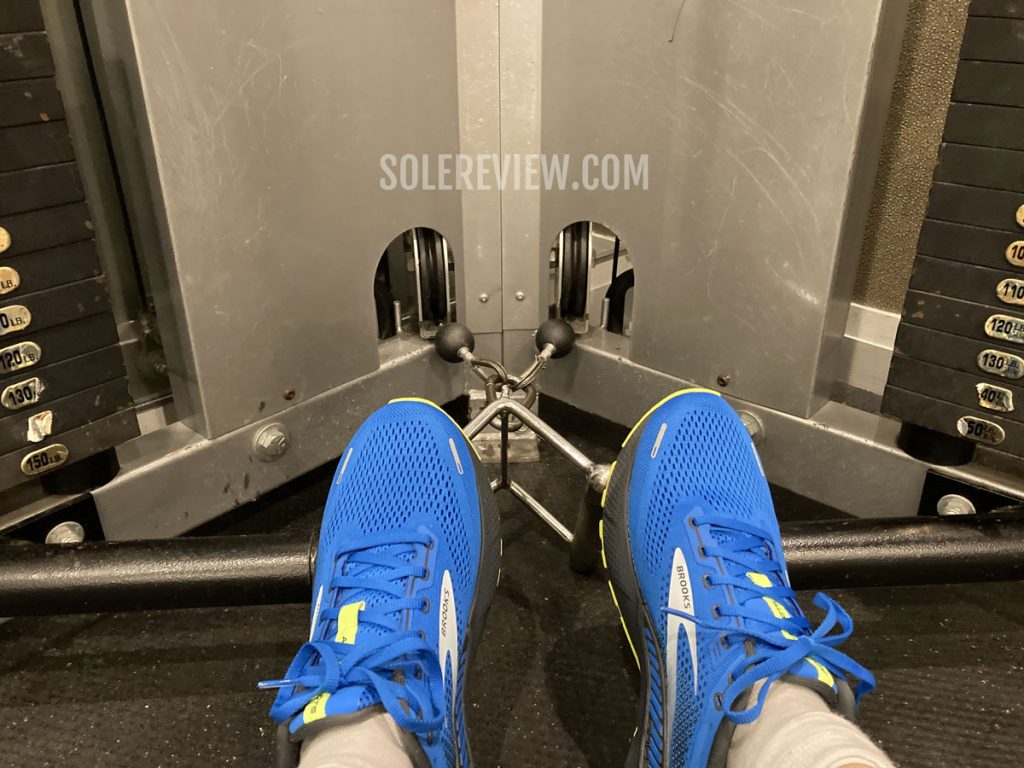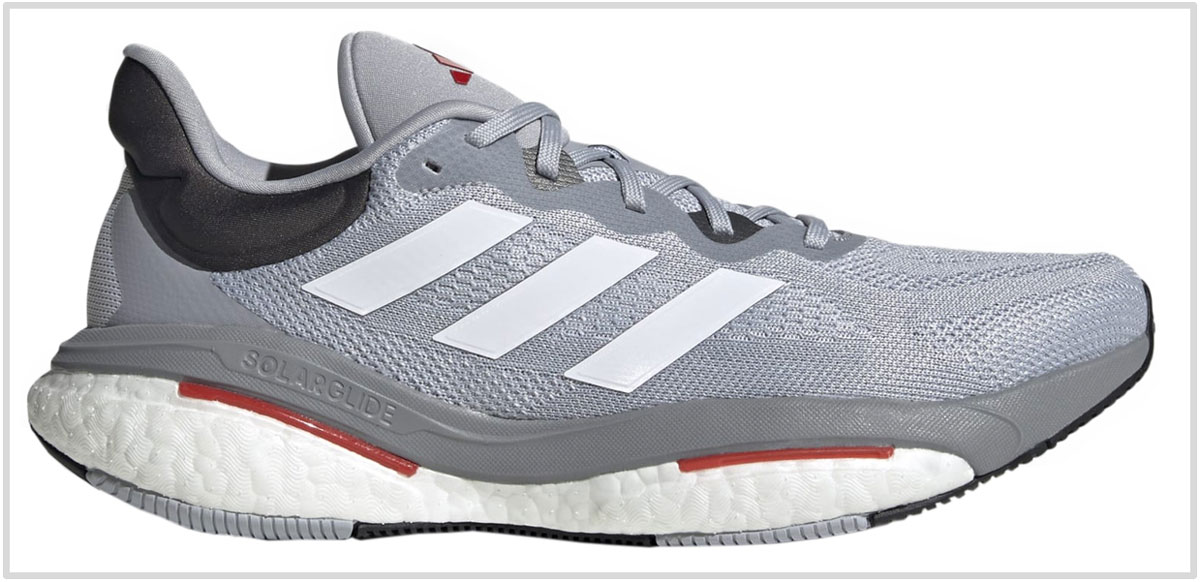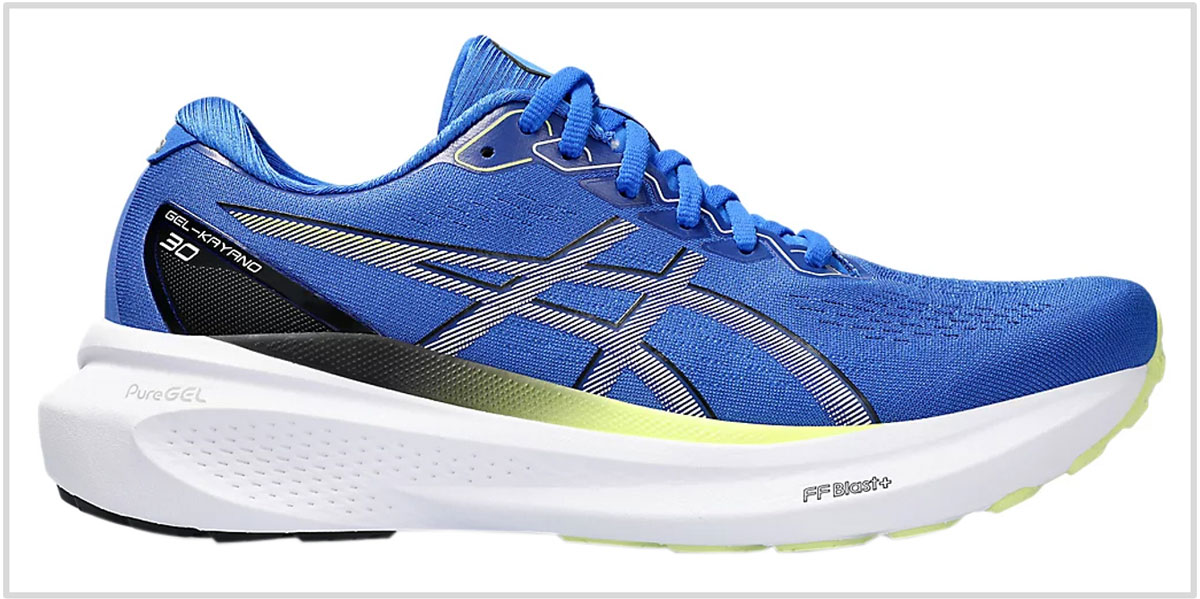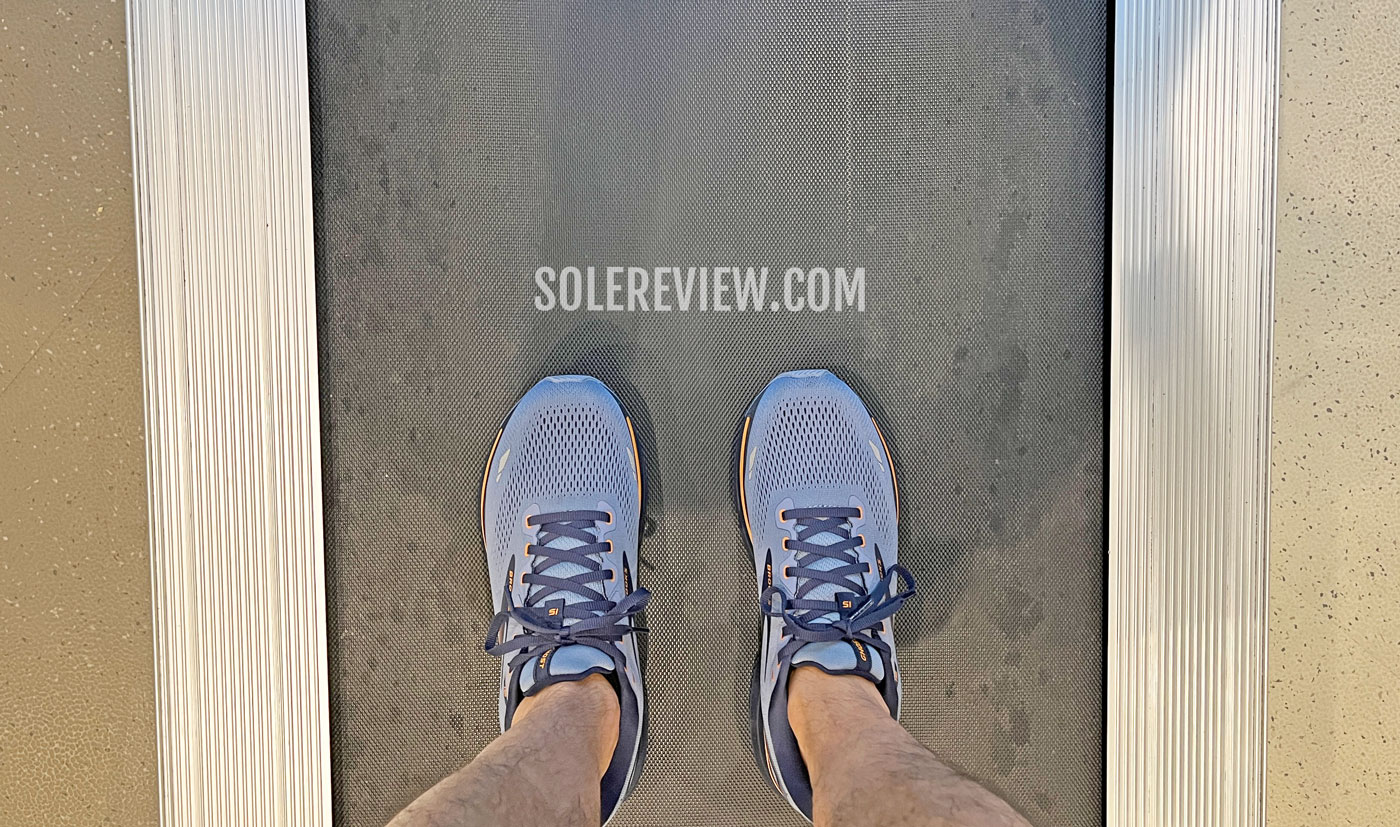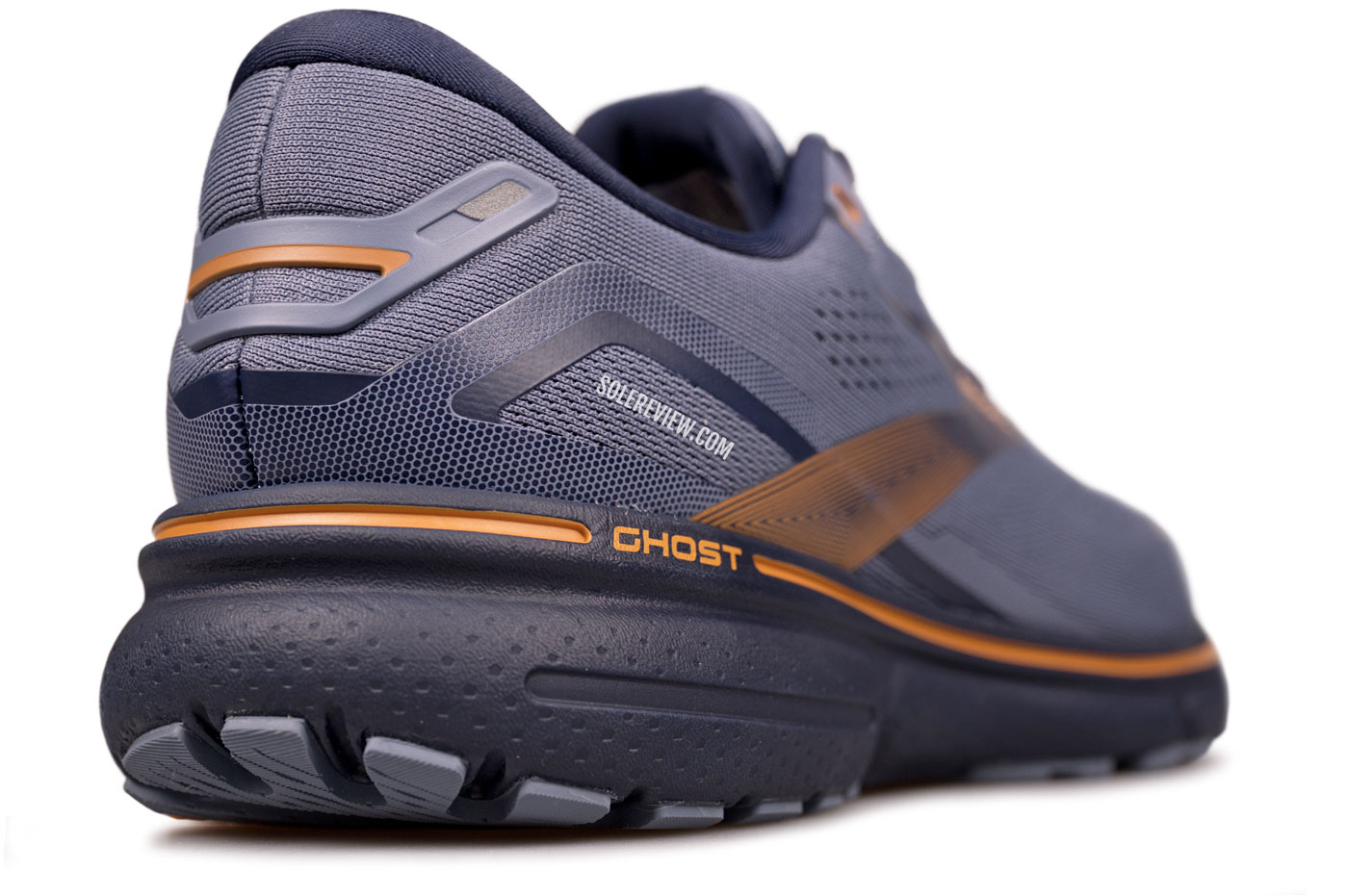This article has been updated with current models for January 2024. The Saucony Kinvara 14 has been removed. Except for the narrower ‘B’ width, the women’s models are almost identical to men’s.
In this product guide:
- 1. Factors to consider
- 2. Our top pick: adidas Ultraboost Light
- 3. Flexible running shoe for gym: Nike Flex Experience Run 11
- 4. Stable running shoe for gym: adidas Solarglide 6
- 5. Cushioned support running shoe for gym: Brooks Glycerin 20
- 6. Cushioned support running shoe for gym: Asics Kayano 30
- 7. Cushioned support running shoe for gym: Brooks Ghost 15
Coming to think of it, finding a pair of gym-worthy shoes is hard. Going to a weight-training gym also involves treadmill miles.
So what kind of shoes work best here – should they be 100% running-oriented, or a shoe that’s designed specifically for training and lifting?
Buying a pure-play training shoe offers a lot of stability, but isn’t necessarily the best choice for treadmill sessions. The Nike Metcon is a good example. Conversely, a soft running shoe offers a higher level of comfort on the road, but lacks the stability that weight-training sessions demand.
There is always a middle ground for everything, and that’s what this guide is about. We’ll help you find a shoe that delivers all-around performance inside the gym.
Our selection criteria apply to the shoes on the list in varying degrees. Our curated guide is not exhaustive, so this reasoning can be applied to other shoes not mentioned here:
1. The shoe should preferably have a heel-to-toe offset of 4 mm or higher: The higher the drop/lift (10-12 mm), the better it is – but only if the running shoe in question is firm, and therefore, supportive.
If a shoe is soft, then a higher offset shoe will prove counter-productive during weight training. A higher drop usually translates into more foam under the heel. If the said foam is soft, then the weight loading will induce instability.
The 4 mm+ drop rule is exempted for zero-drop shoes that aren’t too soft.
Take, for example, Vans and Converse Chuck Taylor models with their 0 mm offsets. Yet, they’re ideal weight-training sneakers because their soles and sidewalls are made of solid rubber. The same goes for stable sneakers (with a slight drop) like adidas Superstars and Nike Dunks. But then, Vans and Chucks aren’t running shoes so their usage is limited to weight training. That’s why this guide exists.
2. Avoid ‘stability’ shoes with medial posts: Let’s say you’re squatting 200lbs wearing shoes with a medial post. What do you think is going to happen?
Well, the softer part of the midsole will compress whereas the medial post will not. This not only creates instability, but the hardness of the medial post will also be felt underneath. Here, a neutral shoe with a single material midsole is a better choice.
3. A firm and stable midsole with a full ground contact outsole: A professional power-lifting shoe is super-firm, exhibits zero midsole bias, and has a full-contact outsole for superior grip and stability. That’s why casual sneakers with those characteristics – like the Converse Chuck Taylor and Vans – are near-perfect for the gym.
For the same reasons, shoes with a heel Air Bag (Nike) or super-soft midsoles are excluded. Besides, treadmill runs require a firmer shoe than road running.
The adidas Ultraboost Light is an exception due to its supportive midsole. The new generation of Ultraboosts are nowhere as soft as the first few versions. Even the Ultraboost 20 was a lot softer.
If you’re lifting more than 110 kg/250 lbs squats or 40 kg/100 lbs (standing) barbell/dumbbells curls, then ignore this guide and get a proper (firm) training or lifting shoe instead. At this weight, a stable training shoe offers better safety than a soft running shoe.
In the past, we have reviewed the Nike Metcon 5 and the Reebok Nano 9 – both were serious cross-training shoes.

If you don’t plan on running, get a proper training shoe like the Nike Metcon instead. The rearfoot lift and stability inspires confidence during squat cleans, kettlebell swings, deadlifts, and regular squats.
For reference, we reviewed the Nike Metcon 7 – another gym-worthy training shoe for lifting and strength conditioning exercises.
In one of the previous editions of this guide, we recommended the New Balance Minimus Trail 10 V1 – a running shoe that was excellent on the treadmill while being flat and stable enough for weighted workouts.
Unfortunately, we no longer see it in New Balance’s assortment. On the bright side, New Balance sells a Minimus series of training shoes. Hence, these low-offset shoes (4 mm) continue to be an option. If we had to choose from that assortment, it would be the Minimus TR.
4. A planted forefoot and outsole grip: The shoe should grip well; exercises such as lunges, leg presses, or calf raises activate the ball (front) of the foot. The forefoot should be flexible too.
If this article had been written five years ago, various Nike Free running shoes would have received a mention. Since versatile Nike Free shoes are no longer available, Flex Experience RN 11 is the next best thing.
5. Sufficient cushioning: Ride comfort is desirable for treadmill runs, and that should co-exist with traits mentioned in points #1 to #4.
Without further ado, here’s a list of the seven best shoes for gym and weight training – sorted in Solereview’s order of preference.
This list applies only if the gym workout includes running. Else, buying a pair of Vans canvas sneakers is a cost-effective way of meeting most weight-training needs.
1) adidas UltraBoost Light
The Ultraboost Light isn’t strictly a running shoe, but that doesn’t make it less friendly for the gym. You see, the Ultraboost went through a transformative design with the UB-22; the Ultraboost Light is based on a similar design.
Just like the 22, the ultra-wide midsole of the Ultraboost Light supports the heel for better ride stability. The plastic clip on the snug upper also helps secure the foot.
The Continental rubber outsole and Torsion shank increase the overall stability by making the ride stiffer. Also, the Ultraboost Light has a deeper transition groove (under the heel) than the Ultraboost 22, and that leads to marginal gains in stability.
The cushioned Boost midsole makes treadmill runs comfortable, whereas the stable midsole and narrow upper keep the foot supported during weight training sessions. The Continental rubber outsole grips well over treadmill belts and rubber tiles.
2) Nike Flex Experience Run 11
In the absence of suitable Nike Free models, the Flex Experience 11 is the next best thing.
The midsole has deep, side-to-side flex grooves that are inspired by the original Nike Free. The midsole isn’t very soft, so there’s adequate stability for weight training. The flexible nature of the midsole design is useful for treadmill runs, lunges, and box jumps.
The Flex Experience 11 has a more supportive rearfoot than the 10, as the heel no longer has the flex grooves. The newly acquired stability makes the V11 a better gym shoe than the V9 and V10.
The upper design is basic, yet fits smoothly and securely. In the back, the collapsible heel is gentle on the Achilles.
By the way, this entry-level lightweight trainer is also an excellent travel shoe.
3) adidas Solarglide 6
Our Solarglide 5 review made it clear that we didn’t think much of it as a running shoe. It was a heavy and clunky shoe with limited versatility. And why bring up the Solarglide 5? That’s because the Solarglide 5 and 6 are based on the same sole, and therefore, behave identically inside a gym.
However, some of the things that work against the Solarglide 6 as a running shoe make it an excellent gym shoe.

The plastic shank also acts as the forefoot stability device. Note the wide flare of the Boost midsole.
The Boost midsole is ultra-stable due to the unique LEP shank that forms a ‘wing’ over the forefoot and heel. The Continental rubber outsole grips very well on the gym floor and treadmill belts.

The LEP shank extends over the heel and forms a wing to stabilize the heel. The Boost midsole provides deep cushioning.
And we all know what Boost foam does – it adds durable cushioning comfort wherever it is used. There’s ample ride comfort for treadmill runs, and the supportive midsole is stable enough for weight-training sessions.
The upper is what you’d expect from most adidas running shoes – it’s secure with high levels of interior comfort. We wished adidas put in a sleeve there, though.
4) Brooks Glycerin 20
If you’ve ever seen the Glycerin 20 in action during a road race, it becomes easier to understand why it would do well inside a gym.
The Brooks DNA Loft 3 foam makes the cushioning firm and supportive; it’s safe to say that Brooks’s claims of ‘supremely soft’ cushioning are a gross exaggeration. In reality, the midsole is on the firm side.

The neutral midsole design and firm DNA Loft V3 foam make the Glycerin 20 stable enough for gym workouts.
The stable ride is a great thing to have during mild weight training sessions. The midsole creates a stable foundation even when loaded, and works on the treadmill as well – this is a running shoe, after all. Our review is here.
The plush upper complements the midsole by keeping the foot locked in.
5) Asics Kayano 30
While this shoe shares the first name with the Kayano 29, the two shoes are nothing alike. Just like the Nimbus 25, Asics has completely redone the Kayano for 2023.
The Kayano 30’s midsole doesn’t have a medial post (Litetruss) or visible Gel pads. Instead, what we get is a single-density midsole with a wide and supportive base.
The Kayano makes it to this list, courtesy of its excellent blend of cushioning comfort and support. The Flytefoam midsole offers treadmill-friendly cushioning with a ride that’s supportive enough for gym workouts.
The secure upper is very Asics-like; it’s plush and smooth on the inside.
6) Brooks Ghost 15
Our in-depth review explained why the Brooks Ghost 15 is the perfect ‘dumb reach’ running shoe.
It doesn’t have a lot of personality, but it’s hard to go wrong with the Ghost. It’s up for everyday runs, a half-marathon, and everything in between – including gym use.
The Brooks Ghost is cushioned, but not too soft. There’s a tinge of firmness within the midsole. That’s great for weight-training exercises when excessive softness becomes counterproductive. The midsole provides sufficient support while being comfortable enough for treadmill runs.
As always, Brooks has done an excellent job with the upper construction and design. The true-to-size upper secures the foot over the midsole, and there’s plenty of plushness packed within the tongue and heel collar.
The outsole footprint provides plenty of ground contact and traction, and that works very well on the gym floor and treadmill.
Do you own any of these shoes? Improve this review by sharing your insights – submit a review here.

